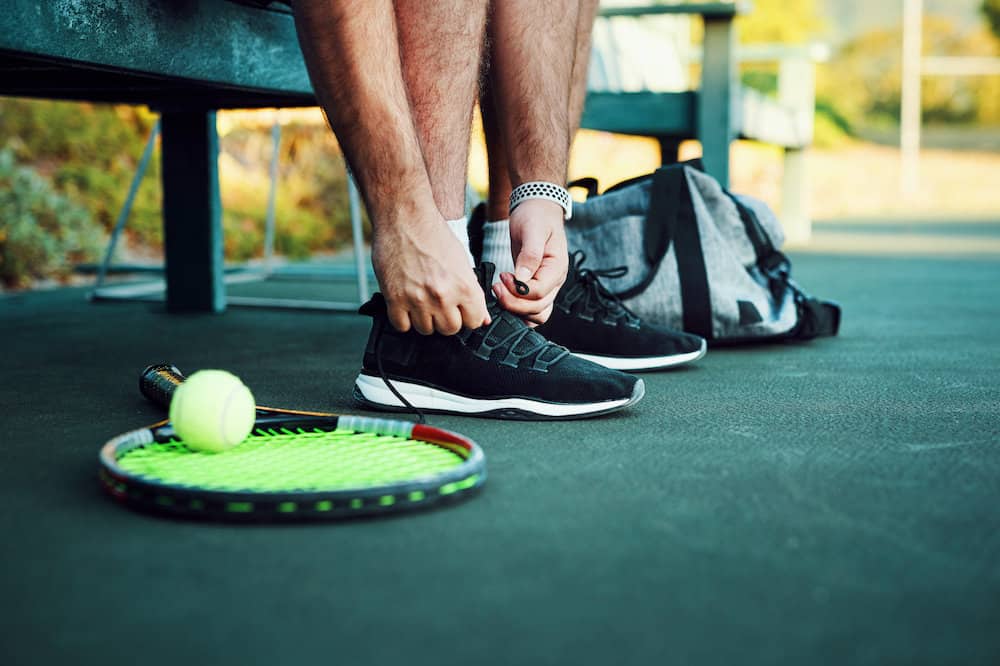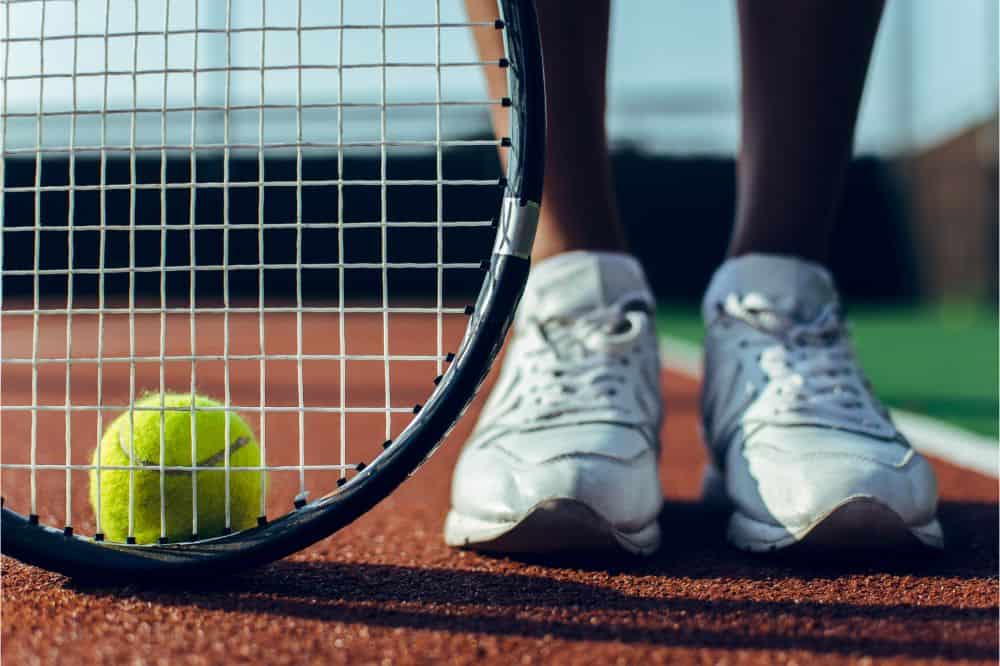When it comes to sports, footwear choice is crucial to complete the experience.
Even so, you will find many wearing their classic running shoes instead. These shoes are so popular that everyone owns at least one pair in their closets.
Is it a good idea to use the same pair for all sports activities? Are running shoes good for tennis, or will I need to invest in special shoes?
To solve your dilemma, let’s talk about the key differences between running and tennis shoes.
We’ll also list the main benefits and disadvantages of wearing running shoes to play tennis.
Tennis Shoes and Running Shoes: What’s the Difference?
Tennis shoes and running sneakers serve different purposes, but both provide adequate assistance and various benefits to the wearer.
Running and walking differ from playing sports like tennis or basketball in many ways.
When it comes to shoes, you’ll notice differences in the support, balance, and foot pressure required for optimal comfort, safety, and flexibility.
By taking a deeper look into the functional and physical qualities of these two trainers, one can pinpoint where they vary.
Overall Design
For the untrained eye, tennis and running shoes look quite similar. But when you examine them closely, you’ll notice subtle differences.
Running shoes are primarily built to give the wearer enough momentum to stride forward.
Due to this uni-directional motion of feet when walking, jogging, or running, excessive lateral movements become secondary to rigidity and sturdiness.
As such, most running shoe designs, such as the Under Armour Assert 9, will include shock-absorption technology in the padding of the forefoot and heel to minimize potential injury.
By contrast, tennis shoes are specially created to give the players’ feet enough flexibility and lateral support to swiftly follow the ball from side to side of the court.
When designing professional tennis trainers, subtle details, such as the lower stack height under the heel and the reduced heal-toe offset, may appear as a stylistic choice.
In truth, these features were added as functional convenience to the tennis player, who would have a better feel of the playing ground while gliding across the courtyard.
Protective Cushioning
Running and other similar sports often involve taking repetitive long steps for an extended period. Over time, this puts pressure on joints, knees, and ankles.
Accordingly, both toe and heel areas are embedded with several layers of cushioning to ensure effortless and pain-free movements.
As for tennis shoes, an abundant amount of cushioning would limit the feet’s free lateral movement and traction. In turn, this makes rigidity and stability less favorable.
Durability
Whether it’s running or tennis footwear, you should keep in mind how susceptible they are to damage.
Naturally, tennis players exert a lot of stress and pressure on their feet.
This ensures enough grip for them to balance and avoid slipping as they abruptly stop or slide across the court.
Once the pair loses its outsole completely and holes start forming, they lose their grip and support and should thus be switched for a newer pair.
Generally, high-quality tennis sneakers would last around a year before the outsole starts to wear off.
In comparison, many say tennis shoes last longer than running trainers, which may be due to the everyday use and versatility of running shoes.
The harsher environments and different running terrains may also play a role in their shorter lifespan compared to tennis shoes.
With many factors at play, the durability of running and tennis shoes depends on how often you use them and all the different external conditions you expose the shoes to.
Weight
When it comes to sports shoes, many well-known brands will ensure there is a trainer option to suit everyone’s preferences.
While support and grip make tennis shoes have heavier outsoles, most running shoes are rather lightweight.
Manufacturers use the lightest materials to produce lightweight running shoes, such as the ASICS UpCourt 5. On average, they weigh around 210 to 280 grams.
Thus, runners can conveniently move with no additional weight slowing them down.
Since speed is a priority for running, these types of footwear tend to lean on the lighter side of all options.
In contrast, heavy-duty tennis shoes could reach 480 grams in weight. This is due to the durable stiff upper and the rubber or EVA outsoles.
How lightweight the tennis gear is relative to how stable, durable, and firm they are.

Are Running Shoes Good for Tennis? The Pros and Cons
Considering all these differences, one can confidently assume the ideal situation is to have both running and tennis shoes at your disposal.
But, if you don’t practice regularly or take the sport too seriously, occasionally wearing running shoes should not be of concern.
Nonprofessionals who only play tennis in their leisure time may not be bothered with compromising the protective and technical benefits of tennis trainers.
Advantages of Wearing Running Shoes for Tennis
Despite not being the most optimal option for everyone, people with joint and arthritic problems may benefit from the excessive cushioning in running shoes.
If you don’t play at a highly advanced level, you may not even need to dynamically switch directions or vigorously slide laterally throughout a game.
As such, additional protection may be a good idea, especially for your toes, heels, and ankles.
Running shoes even have excellent arch support, which may affect the posture of frequent players but would be extra security for others.
That said, what makes running shoes the trainers of choice for many is the level of comfort they provide.
This may explain why people not only play tennis with them but also wear them casually on a daily basis.
While it is important to prioritize your comfort while exercising, it’s also possible to think that these benefits are not enough to replace professionally designed tennis shoes.
Disadvantages of Wearing Running Shoes for Tennis
The risks of substituting tennis trainers for running shoes will only be apparent when playing tennis becomes a daily ritual or an exercise habit.
As mentioned, playing tennis professionally involves more than just running frontwards and backward.
To keep track of the ball and land swings, players have to switch from side to side, serve while on the tip of their feet, and pivot when they need to land a high-impact hit.
Naturally, endurance sports such as long runs or walks will not have trainers built with the “stop-run-stop” scenario in mind.
Despite the cushioning of running shoes to maximize game performance without risks of slippage or injuries, you’d be better off wearing stable and heavy-duty tennis shoes.
Besides, injuring yourself is not the sole downfall of playing tennis with running shoes.
Whether it’s flat grass courts, rough hard courts, or regular clay courts, different tennis court surfaces will require different sole properties.
By wearing running shoes on courts not compatible with them, damage is prone to occur on both the trainers and the playing ground.
Intense to advanced tennis will put a significant toll on your feet.
In turn, the integrity and overall quality of your trainers will wear off faster than your professionally built, durable tennis shoes.
So, if you play more than three to four games a week, you will damage your running sneakers faster than you may expect.
Wearing Running Shoes To Play Tennis: Final Verdict
Running and tennis are two intense sports where the right pair of shoes is a make-or-break decision.
For this reason, athletic footwear companies don’t shy out when it comes to creating trainers for every occasion.
The problem is that although the options are vast, not everyone can afford to spend hundreds of dollars on a dozen pairs.
So, do you really need to buy special trainers, or are running shoes good for tennis?
It all depends on how often, where, and intensely you play tennis. If you are still hesitant, there are always professional tennis coaches to consult.













